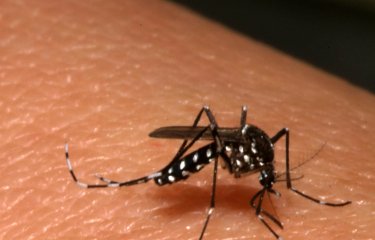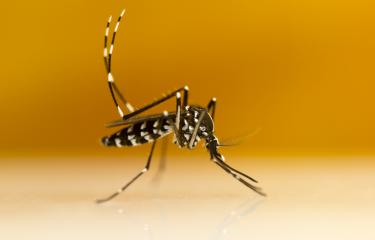With the help of a genetic structure analysis carried out on 25 Ae. albopictus mosquito populations covering all continents, scientists demonstrate that the demographic history of Ae. albopictus has shaped the vector competence of these populations. This information is essential to better estimate the risks of chikungunya emergence in Europe.
Who has not heard of the tiger mosquito? Summer is its favorite season in our latitudes. Still anecdotal in 2004, when it was detected in Menton in south-eastern France, Aedes albopictus is now present in more than half of the departments in mainland France. The species is expanding rapidly in France compared to other European countries.
Since 2004, date of the well-known chikungunya emergence on La Reunion Island, the community of entomologists has focused a lot of efforts on the study of this species. In collaboration with the University of Pavia and the Faculty of Medicine of Geneva, the Pasteur Institute in Paris and the Pasteur Institute of Guadeloupe are providing us with an evolutionary history of this fascinating mosquito. Aedes albopictus is a mosquito that has taken advantage of human activities to extend its territory and be linked to the emergence of arbovirus of which it is the vector. Chikungunya is a virus of the Togaviridae family which has affected different parts of the world on several occasions: 2004 in the Indian Ocean, 2007 in Africa, 2007 in Europe, 2011 in the Pacific region, and 2013 in the Americas.
Originally from Asia, Ae. albopictus spread from the 18th century in the islands of the Indian Ocean, Hawaii Islands, and from the 1980s, conquered the temperate regions, Europe and the Americas. The ability of its eggs to tolerate low temperatures and resist drought gives this mosquito the privilege of being among the 100 most dangerous invasive species.
With the help of a genetic structure analysis carried out on 25 Ae. albopictus populations covering all continents, scientists demonstrate that the demographic history of Ae. albopictus, which results from successive events of invasion, diversification and divergence from ancestral lines, has shaped the vector competence of these populations. Thus, the specific interactions between the genotypes of mosquitoes and viruses have influenced Ae. albopictus vector competence for chikungunya virus through an adaptive co-evolution process. This information is essential to better estimate the risks of chikungunya emergence, specifying the strong genetic proximity of the mosquito in South-East France with that of La Reunion Island, where the largest chikungunya epidemic ever occurred in France, and more generally in Europe.

Geographical representation of the global spread of Ae. albopictus highlighting the co-ancestry of the different derived populations and the dissemination and transmission efficiencies for Chikungunya virus (CHIKV). Copyright: Institut Pasteur.
Source
Vector competence of Aedes albopictus populations for chikungunya virus is shaped by their demographic history, Communications Biology, June 24, 2020
Anubis Vega-Rúa 1,*, Michele Marconcini 2,*, Yoann Madec 3, Mosè Manni 2,4, Davide Carraretto 2,Ludvik Marcus Gomulski 2, Giuliano Gasperi 2,#, Anna-Bella Failloux 5,# & Anna Rodolfa Malacrida 2,#
1 Laboratory of Vector Control Research, Institut Pasteur of Guadeloupe, 97139 Guadeloupe, France
2 Department of Biology and Biotechnology, University of Pavia, Via Ferrata 9, 27100 Pavia, Italy.
3 Department of Infection and Epidemiology of Emerging Diseases, Institut Pasteur, 25-28 rue du Dr Roux, 75724 Paris, France
4 Department of Genetic Medicine and Development, University of Geneva Medical School, 1 rue Michel-Servet 1211 Genève and Swiss Institute of Bioinformatics, Geneva, Switzerland
5 Department of Virology, Arboviruses and Insect Vectors Unit, Institut Pasteur, 25-28 rue du Dr Roux, 75724 Paris, France.
* These authors contributed equally
# co-last authors
Communications Biology (2020) 3:326 (https://doi.org/10.1038/s42003-020-1046-6)
This study is part of the priority scientific area Emerging infectious diseases of the Institut Pasteur's strategic plan for 2019-2023.








